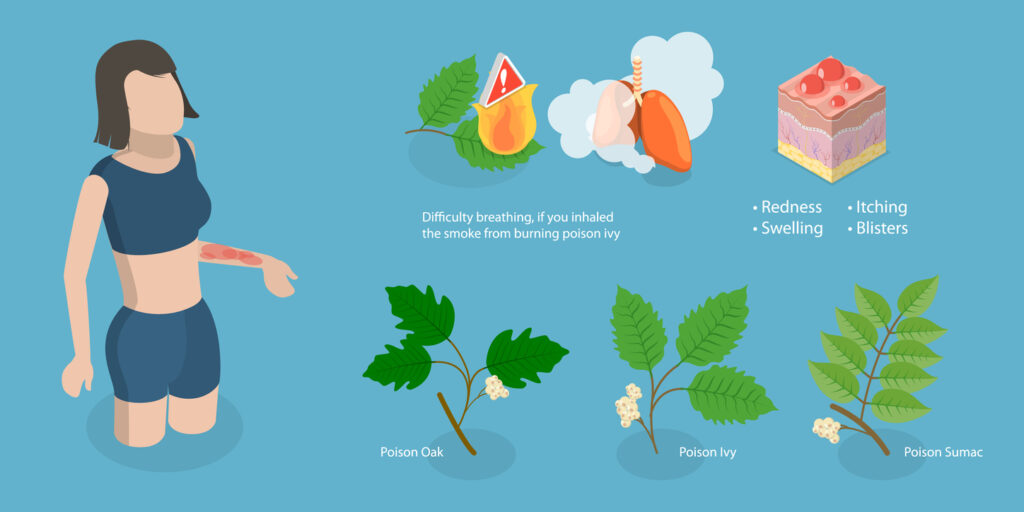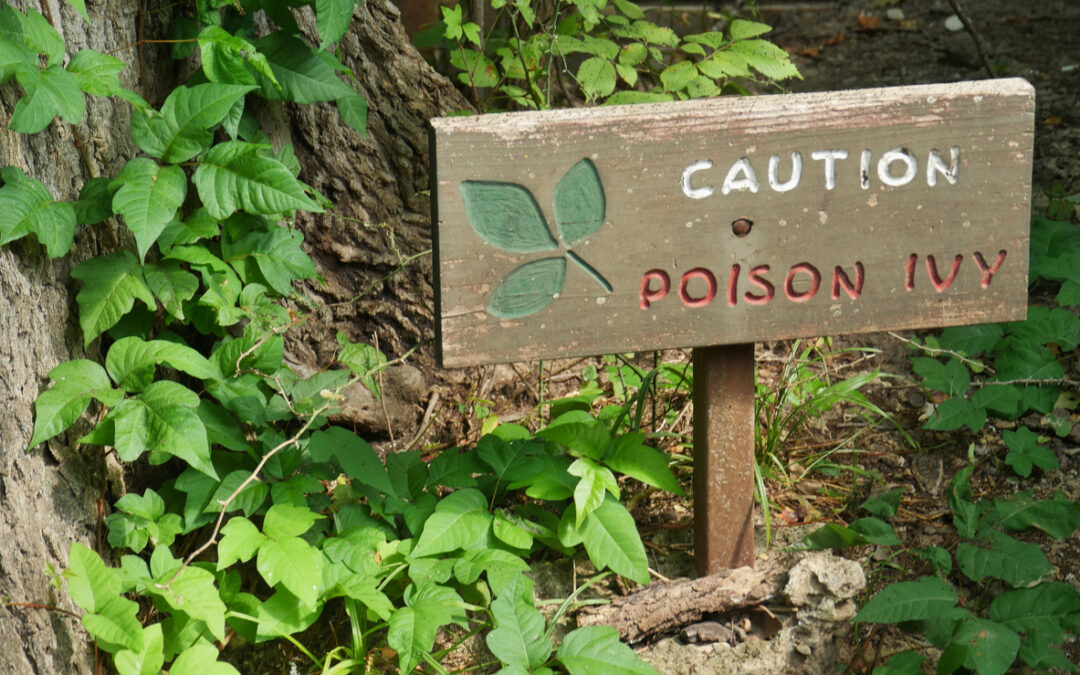Nature lovers often encounter the unfortunate reality of coming into contact with poison ivy, oak, or sumac. These plants contain an oily resin called urushiol, which can cause severe allergic reactions. Understanding the symptoms and effective management strategies for a poison ivy rash is crucial for anyone who spends time outdoors. In this blog, we will discuss how to recognize these rashes, treat them, and prevent future encounters.
What Are Poison Ivy, Oak, and Sumac?
Poison ivy, oak, and sumac are plants that produce urushiol, a substance that triggers allergic reactions in many people. Even a small amount of urushiol can cause a poison ivy rash, which manifests as red, itchy, and swollen skin with blisters.
- Poison Ivy: Typically grows as a vine or shrub and is identifiable by its three glossy leaflets.
- Poison Oak: Appears as a shrub with leaves that resemble those of an oak tree, usually in clusters of three.
- Poison Sumac: Grows as a tall shrub or small tree with 7-13 smooth-edged leaflets per stem.
Recognizing Symptoms of a Poison Ivy Rash
The symptoms of a poison ivy rash usually appear within 12 to 48 hours after contact and include:
- Redness
- Swelling
- Itching
- Blisters
In severe cases, the rash can lead to swelling in the face, neck, or genitals and may require medical attention. For more information on skin conditions requiring professional care, visit our patient services.

Immediate Steps After Exposure
If you believe you’ve come into contact with poison ivy, oak, or sumac, follow these steps immediately to reduce the severity of a poison ivy rash:
- Cleanse Your Skin: Wash the affected area with soap and cool water as soon as possible. This helps remove the urushiol oil and prevents it from spreading.
- Remove Contaminated Clothing: Carefully take off any clothing that may have touched the plants and wash them separately.
- Avoid Scratching: Scratching can lead to infection. Try to keep your hands away from the rash.
Treatment Options
Once you have a poison ivy rash, several treatments can help alleviate symptoms:
- Over-the-Counter Remedies: Topical corticosteroids, calamine lotion, and antihistamines can reduce itching and inflammation.
- Cool Compresses: Apply cool, wet compresses to the rash to relieve itching and discomfort.
- Oatmeal Baths: Soaking in an oatmeal bath can soothe irritated skin.
For persistent or severe rashes, consult our dermatology experts at White Rock Dermatology to explore prescription treatment options.
Prevention Tips
Preventing exposure to poison ivy, oak, and sumac is the best way to avoid a rash:
- Learn to Identify the Plants: Familiarize yourself with what these plants look like and avoid them during outdoor activities.
- Wear Protective Clothing: Long sleeves, pants, and gloves can provide a barrier against urushiol.
- Use Barrier Creams: Products containing bentoquatam can be applied before going outdoors to potentially block urushiol.
When to See a Dermatologist
While most poison ivy rashes can be managed at home, certain situations warrant a visit to a dermatologist:
- The rash covers a large area of your body.
- You experience severe swelling or difficulty breathing.
- The rash is not improving after a week of home treatment.
For professional diagnosis and personalized treatment plans, schedule an appointment with the specialists at White Rock Dermatology.
Conclusion
Understanding and managing a poison ivy rash involves knowing how to identify the plants, taking immediate action after exposure, and following effective treatment strategies. By adhering to these guidelines, you can minimize discomfort and enjoy the great outdoors safely. For more comprehensive skin care advice and treatment options, connect with us at White Rock Dermatology.
By staying informed and prepared, you can protect yourself against the unpleasant experience of a poison ivy rash and enjoy your time in nature with peace of mind.


Recent Comments